As someone who has gone through the keto induction phase many times now I felt like writing a keto induction phase survival guide, so to speak. I’m currently on day 5 of keto induction and want to share a day-by-day analysis of what to expect during keto-induction including hunger levels, energy levels, physical changes both internal and external and anything else you may find during your own induction phase.
I’ll start with a little info on the keto-induction phase before moving into my daily expectations log and finally provide tips and suggestions on how to survive induction and speed up the induction process a little.
What is keto induction?
Keto induction is the process of your body moving from a glucose fueled metabolism to a ketone fueled metabolism. This means your body, once depleted of remaining glycogen stores, starts adapting itself to breaking down fat into ketones as an alternative fuel source to survive.
It takes time for your body to adjust and become efficient at using its new fuel source. Once the induction phase completes, we call it being keto-adapted, meaning your body has now adapted to using fat as it’s primary fuel source.
How long does keto-induction take?
This varies from person to person and hence everyone’s experience, my own included, may differ greatly from another’s experience. The average time for keto-induction seems to be about 2 weeks according to most people’s experience but I have heard of it ranging from just a few days, up to 8 weeks.
For me, it depends on how long I’ve been out of ketosis. If I’ve had a single day of carb bingeing I can get back into ketosis in a day or two. I didn’t watch my diet at all last month though and expect induction to be a full 2 weeks, which is about the maximum time it takes for me.
Keto induction Survival Guide? Does that mean it’s dangerous?
Nope, that’s just me being over-dramatic with my post titles. However, the keto-induction phase can be uncomfortable and difficult for most people, especially the first time and especially if you’re not sure what to expect. I’m hoping that I can provide a complete guide to alleviating a lot of this “pain” for most. Simply knowing what to expect is a good start as anxiety due to unknown symptoms is never fun. I’ll be providing a lot more tips to target specific issues though so read on!
I just want to know what to expect, just list some damn symptoms already!
For those thinking something similar to the above, some of the more common symptoms to expect during keto-induction are:
- Very low energy levels!
- Crazy hunger.
- Oily skin.
- Moodiness.
- General lack of willingness to do anything
Daily expectations of keto-induction and recommendations for survival
Day 1 of keto induction
What to expect?
Day 1 is setup day. If you’ve just gone cold turkey on carbs, your body should have plenty of glycogen stores in reserve. This means even if you cut the carbs entirely, you’ll still be using your carb reserves as fuel, so you shouldn’t feel any different today.
What you want to be focusing on in day 1 is setting yourself up to get through induction as quickly as possible. To do this, aim for no more than 20g of carbs for the day and those should be from leafy green vegetables only. Due to the extreme carb restriction, you won’t be able to get all of your dietary requirements met. Take a multi-vitamin and a fibre supplement such as metamucil if possible.
I also highly recommend getting some MCT oil to help with ketosis in general. Due to the metabolic pathways MCT oil takes, it has a ketosis inducing effect on the body and can help to both speed up induction as well as release more of your bodies fat stores when already in ketosis, ie. lose more weight.
The point of ketosis is to change from using carbs as a fuel source to using ketones from fat breakdown as a fuel source. To induce this you need to be eating fat. Yes, eat fat to lose fat. But you also want to be careful not to eat too much protein as excess protein is converted into glucose (carbs) through a process called gluconeogensis. It’s just your body being good at not dying. This is the main reason why people doing paleo often find they stop losing weight and start gaining it back after a month or so. They focus too strongly on meat consumption and don’t balance it with enough fat, essentially causing their body to remain a carb burning type.
This doesn’t mean you should avoid protein of course. You need it to feed your muscles, repair, rebuild and grow them. Just don’t consume more than you can use.
What to eat?
So we’ve covered what not to eat but now the fun part, what you should eat.
Day 1 and 2 can be aided with a bit of intermittent fasting so don’t worry if you don’t eat too much. You’ll find that with high fat foods you will feel full very quickly off seemingly small portions. Personally, I make myself a thermogenic supplement such as 2Shredded in a shaker and don’t have my first meal until about 11 am or later.
If you’re a coffee drinker, you should definitely get on Bulletproof Coffee. It’s fantastic for nourishment, energy and inducing and enforcing ketosis. But if you’re like me and not a fan of coffee you can simply replace coffee with something you do enjoy. For me, I use miso soup as my basis and often a little chilli oil to make what I call Keto Lava Cup.
If that doesn’t sound like it’s for you, there’s plenty of other snacks to get you through the day. Choose something low carb such as salami, eggs, tuna, etc. and simply add fat to it in the form of mayonnaise, butter, cream or whatever you prefer. This way you can still choose paleo / high protein snacks but avoid gluconeogensis by reducing the portion size and adding calorie dense, keto-inducing fats. Just get creative. Use an app like Myfitnesspal to assist with checking if foods are high carb if you’re not sure.
Day 2 of keto induction
Today you’ll most likely begin to struggle. Your body is low on glycogen stores and has yet to convert your metabolism to a fat burning type. I strongly recommend cardio and supplements today!
This is where a great thermogenic complex such as 2Shredded by Beast will really come in handy. Not only will it assist on breaking down fat stores to get your body prepped for ketosis but it really curbs hunger pangs. Combined with some cardio (ideally supplemented with a pre-workout supplement such as Upload or Ritual) and you should find today a lot easier than most people doing induction do.
Keep eating those fats too. Your body doesn’t know how to metabolize fats properly yet and will be screaming out for carbs but keep working on training your body for the conversion to ketosis.
Day 3 of keto induction
Prepare yourself, ketosis is coming.
Not gonna lie, day 3 is usually hell. If you’re working today, make sure you supplement a good thermogenic or you’re going to find your head on the desk most of the day.
For me, I really do feel my body “giving up”. It’s as if it’s gone “You win, you’re not feeding me, I’m just going to curl up and die now”. Luckily we know better and know that we have plenty of fuel in our bodies in the form of lipids and if you’ve followed my guide you’ll most likely begin adapting to this fuel source as of tomorrow.
Keep hydrated. Especially if you’re taking my recommendation of supplementing with a thermogenic as they can really dehydrate you. Add a half teaspoon of salt to your water if you’re doing any intermittent fasting or eating foods low in sodium. Keto-adaptation has been found to be demanding on your sodium levels so increasing these a little will help with water retention and other bodily functions. If you find you have any muscle spasms (twitching) it’s a good sign you need some salt. Also ensure the carbs are still below 20g!
Day 4 and onwards
If you’ve survived this long (kidding) then congratulations, you should be beginning to feel much better. By day 4 your body has started using lipids for fuel and you’re no longer running on empty. It usually takes another week or so before your body has become truly efficient at using fat for its fuel source so you should gradually feel better and better. You may start increasing your carb limit to 50g daily but no more than 9g within a single hour, or you may cause your insulin to spike.
By the end of week 2, if you’ve been following my guide and keeping the carbs low you should be feeling better than you ever have in the past when you were a sugar-fuelled, less healthy individual. It’s very common to hear of all kinds of illness from skin rash to more severe biological disorders simply alleviating once in ketosis. You’d be surprised how many sicknesses are caused simply by sugar consumption.
My go-to supplement recommendations
It’s important to keep yourself supplemented during the induction phase of ketosis, and may also remain beneficial once your body has achieved optimal ketosis.
Pre-workout supplements
- Ritual by ANS Performance – perfect for a morning workout that will keep you energetic for many hours after, without a nasty crash.
- Upload by Alpha Pro Nutrition – may be a better option if you’re doing heavy weight training as the burst of energy you get from Upload is much stronger than that of Ritual. You may expect a minor crash from Upload and will definitely want to supplement further for energy throughout the day.
- SHATTER SX-7 by Muscletech – not as much energy provided by SHATTER as their is in Ritual or Upload, but shatter contains many fat-burning ingredients that may help to lose more weight throughout the day. May be best to swap to this once optimal ketosis has been reached
Thermogenic supplements
I only have 1 thermogenic supplement that I highly recommend right now, and that is 2Shredded by Beast. This supplement when taken slowly throughout the morning and into lunch time will keep your energy levels high and will increase your mental alertness. Obviously you can get this same effect in a coffee, but 2Shredded also comes well dosed with many additional fat-burning ingredients that will keep your resting energy expenditure high throughout the day.
I can’t stress enough how much easier the keto induction phase will be if you supplement with 2Shredded. And as an added bonus, thermogenesis INCREASES FAT BURN by increasing energy expenditure!
Don’t wait any longer, get yourself some 2Shredded today:
Other supplements
- Multivitamin – as you will be cutting many nutrient dense ingredients out of your diet for the induction phase, you should definitely supplement a multivitamin to assist with keeping yourself nourished.
- Alpha-lipoic acid (ALA) – this potent antioxidant is just a handy addition for anyone’s diet and for general well-being.
- L-Carnitine – this comes in many forms but my personal favourite is “Doctor’s Best, Best L-Carnitine Fumarate, 855 mg, 180 Veggie Caps” which I get from iHerb.com. This is another boon to your bodies fat burning potential and is safe to stack with other supplements.
- L-Glutamine – is an amino acid that is naturally produced in your body to assist with protein synthesis. During bouts of exercise your body can easily deplete your L-Glutamine stores and can take up to 6 days to replenish them. L-Glutamine is found to promote good gut health, which is one of the most important factors for overall health and weight management. It is also found that supplementing 2g daily can increase growth hormone levels by up to 400%, which assist in natural muscle building and fat loss.
- Magnesium – another supplement to assist with gut health. Some studies have also found that magnesium supplementation may reduce or even eliminate body odour in otherwise healthy individuals. I can vouch for this, as my sweat never seems to smell since taking magnesium unless during or the day after a big night of drinking!
- Digestive enzymes – a good multi-enzyme complex such as “Now Foods, Super Enzymes, 180 Capsules” will assist in breaking down and digesting fat, carbohydrates and protein. If you find that you ever get gassy, or stomach cramps not long after eating, you may not be able to produce enough enzymes naturally to digest your food completely, leaving it to rot in your stomach and cause issues. Ideally, optimizing your gut health with good diet and supplementation of L-Glutamine and magnesium will be enough to correct digestive errors. However, I find that adding in some extra enzymes to assist in digestion works wonders for me and I can really feel the difference between properly digesting my food and not
Final thoughts
I began writing this article in the first week of January this year. It is now 4 months later and feel that my keto induction phase survival guide is now ready to be published. I expect that I will be updating this guide from time to time as I learn and experience new things. If you find any errors in this guide, please leave me a comment below to let me know so I can correct this as soon as possible.

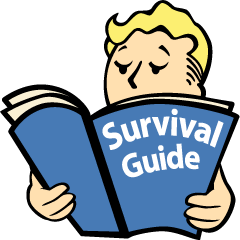
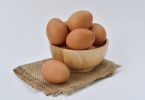
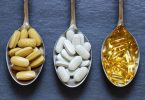

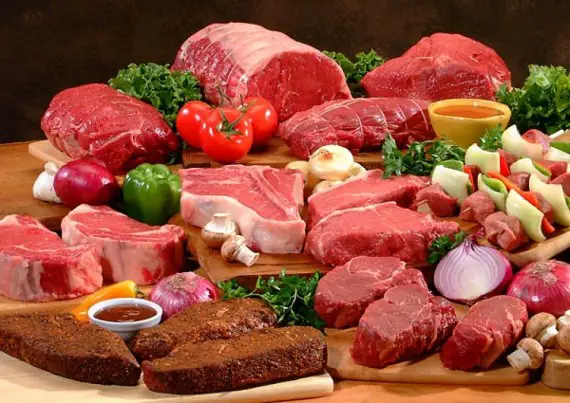
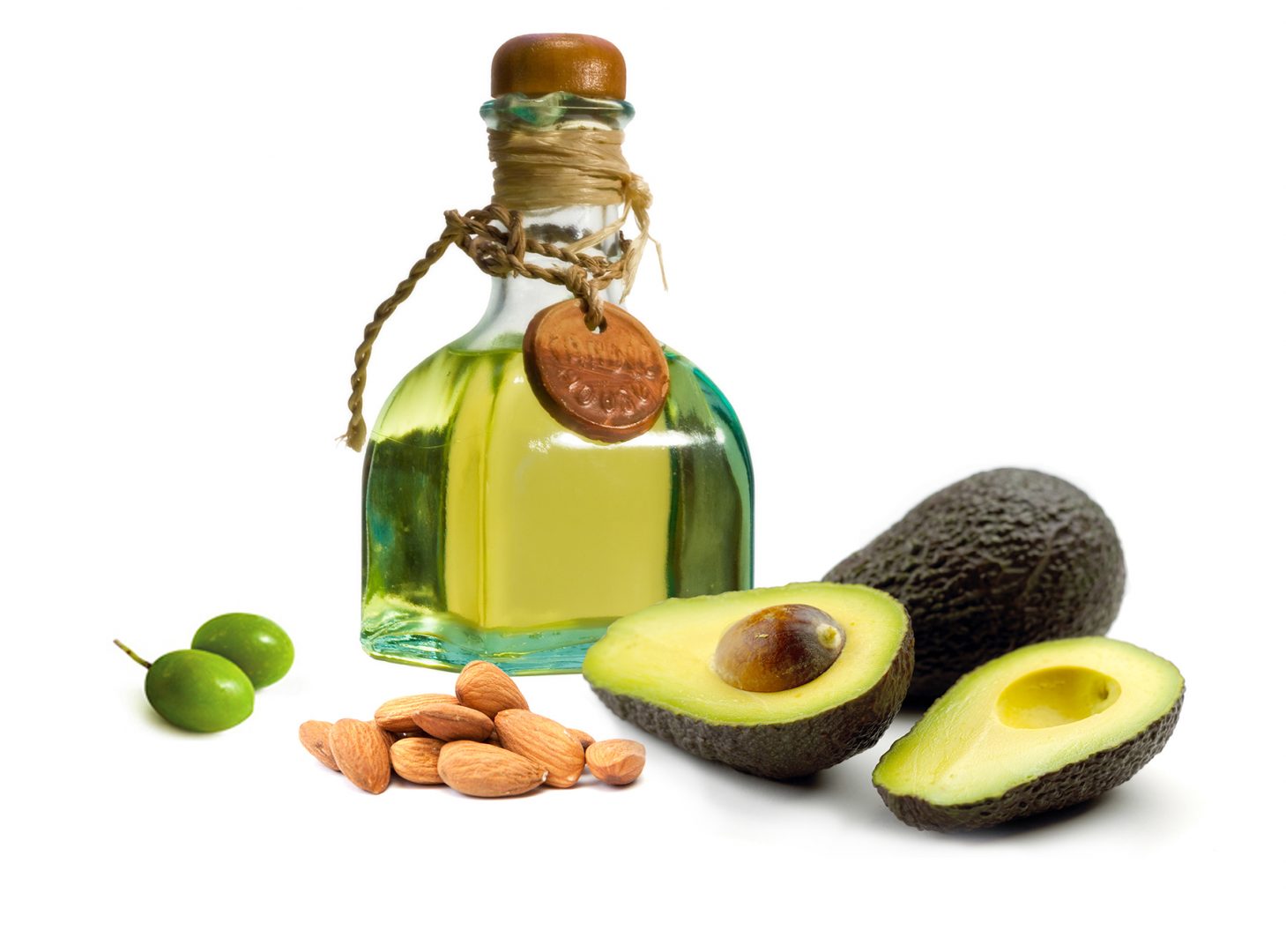
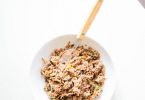
Thanks for sharing.
Glad you liked it Charlotte 🙂
Good read!
Thanks Neph, hope my experience is helpful for yourself and others who read it 🙂
have you tried fasting for day 1
Hi Donald. I regularly use intermittent fasting these days, it’s a useful tool for rapid weight loss especially when combined with a ketogenic diet!
You can read my article on the subject here. Please dont hesitate to leave a comment on that article with any questions you may have 🙂
Cheers
Lee.
I really appreciate all of this. I do find intros like this often full of unexplained jargon and it is frustrating, such as get yourself a good thermogenic complex. I can look that up of course, but am doing a lot of work to make all this happen, it would be so nice to find it all spelled out in one place. That said, I do thank you. This is useful.
Extremely helpful. What are good standby high fat snacks you recommend?
Hi Troy,
There’s lots of good options, I should really write up an article listing many of the best / easiest options soon.
My personal favourite is boiled eggs. Boil up a few days worth, I usually do 12 at a time. Add about 1/4 cup of vinegar to the boiling water before putting the eggs in, this helps the shell separate from the egg. Have a plastic / tupperware container ready full of cold water and ice (as cold as possible), tip the eggs into a strainer then drop them straight into the ice water. The shock from the rapid temperature change further separates the shell from the egg, making it a lot easier to peel them. Once all peeled and prepared I generally just leave them whole, in a container in the fridge at the office, add a bit of soy sauce or mayo to 1-2 as a snack when hungry.
Another great option is salami. It’s high in fat and protein with 0 carbs. I often have a whole stick in the fridge, cut a few thick slices off, can even have them with an egg or two – delicious!
Let me know if you have any dietary requirements or preferences and I’ll do my best to come up with some snack ideas to accommodate.
Cheers,
Lee.
Hi Lee,
Thank you for taking the time to write this. Really informative and I really appreciate it. I do have one question. Have you ever encountered a vegan that was able to go into keto? I started yesterday and I am using my fitness pal app. I had 30 carbs mostly from my spinach, tempeh, avocado salad. Thoughts? Again I really appreciate you taking the time to write this!!!!
Hi Melinda,
No problem, thanks for taking the time to read and leave a commment!
Personally I have never tried keto and vegan together, however our guest writer Natalia has and she wrote about her experiences here: https://www.ketosisirl.com/vegan-ketogenic-diet/
30 grams of carbs will certainly be low enough to enter ketosis. Ideally try not to go over 9-10 grams within a single hour as to not trigger too much of an insulin response, which can hinder your progress. I use MyFitnessPal also and find that often the foods listed are inaccurate, so I always try to exaggerate the amount consumed by around 20%. So if I feel I’ve had 100 grams of avocado, I’ll put it down as 120 grams in my food diary. I’d rather be eating a little less carbs than expected than a little more, and this seems to work well for me.
If you’ve stuck with 30 grams per day since the time you left your comment you are most likely already in ketosis, especially if you’ve been doing any exercise as well. Let me know how it’s going for you. If you’re unsure, you can get keto diastix (often called Ketostix) from most pharmacies that measure the free ketones in your urine (it’s a little awkward at first but you get used to it). They’re not as accurate as blood measurements but if it turns purple you can almost guarantee you’re in ketosis.
Look forward to hearing from you again.
Cheers,
Lee.
Please help me Lee! I am ravenously hungry all day and do not know what to do to get out of this slump! I am eating more kilojoules then when I was eating carbs. I do not understand it! i have no energy and I just want to eat all the time!
Hi Tasneem,
The reason you’re so hungry is because your body is not yet in ketosis. The first few days (or even up to 2 weeks if you don’t go all out and follow the tips I provided) your body is still using glucose / glycogen as its fuel source. You’re not providing your body with any, so it’s screaming at your for more food. You have to endure. Once your body makes the switch to ketosis, and starts using fat for fuel, you will no longer be hungry as you will have an (almost) endless fuel source (unless you’re at a really low body fat already, in which case you need to eat lots of fat to keep ketosis going).
If this is your first time trying keto, you will certainly find the first few days very difficult. I’ve outlined all of my best tips for getting through this in the induction phase guide you’ve left this comment on but here’s a quick summary of things to try:
1. Cardio! We all hate it, but do as much as you can in the first 2-3 days. If you’re like me and don’t like to exercise outdoors, and you don’t have any indoor equipment like a treadmill or stationary bike, you can usually pay a casual entry fee at gyms ($10 for a day pass for example). Do this for only 2 days if you have to, and get a solid hour of cardio in. This will deplete reserve glycogen faster, forcing your body to enter ketosis to start using fat as fuel.
2. Black coffee. By that I mean coffee and water. No artificial sweeteners, as they’ve been shown to trigger an insulin response the same way sugar does. I literally, right now, have a 1L protein shaker on my desk with black coffee and ice cubes (I prefer iced coffee to hot). I plan to fast until late afternoon today and this keeps the hunger away.
3. Thermogenic supplements. I find that 2Shredded (mentioned multiple times in the article and there’s an entire review of it over in my supplement reviews section) suppresses my appetite like nothing else. If you are using it though, do not also have coffee as the amount of caffeine may be too high and can cause anxiety and other issues. 2Shredded will work better than coffee for appetite suppression but will cost a lot more than coffee, so it’s up to you (I have Amazon links to buy it super cheap in the article though).
Try these, and if you’re still having trouble, please reply with a full day or 2 worth of meals that you have eaten so I can analyse what might be going wrong.
Cheers,
Lee.
Not sure if this maybe of help to you or anyone with cravings. . I see a lot about eating low carb veg and meat, eggs etc but the key to avoiding the hunger is fat which can be overlooked. The salad, meat ( low carbs, protein) should be the vehicle for the main fuel the body needs, fat. Salad with olive oil, cheese, avocado and a portion of fatty salmon and I doubt you will crave.
Hi Lee
Can I eat Biltong on the Keto Diet? if so which kind.
When can I start having wine, today is day 3 of my keto diet day. PS I just developed green to black patches on my skin, should I be worried?
Hi Zanele,
The keto diet isn’t really restrictive in what specific foods you can or can’t eat. It’s focused primarily on limit a specific macronutrient – carbohydrate. As long as your total carb intake doesn’t exceed your personal limit (a good rule of thumb is 50 grams or less per day, but the lower you go the more effective ketosis will be), and you don’t exceed 10 grams within a single hour, you should be fine to eat or drink whatever you like.
Of course you won’t be able to have much, say, pasta, to reach 10 grams of carbs in an hour. So it makes sense to avoid carb dense foods, but they won’t actually take you out of ketosis if you keep to your carb limits. Wine isn’t too bad carb wise, 1 cup has around 7 grams of carbs for dry white wine. As long as you’re not also eating carbs you can safely have 1 cup (250 ml) of wine per hour without leaving ketosis. Biltong or other kinds of jerky should be 0 carb, or at least very very low carb, but if you’re buying it packaged, just check the nutrition label to be sure. If they’ve filled it with sugars then it will likely be high carb, but if it’s natural, real jerky you should be able to eat as much as you like.
As for the patches on your skin – that’s not a side effect of ketosis. You should definitely see a doctor for that! I’m in no way a medical professional and all I can tell you is what worked for me, but this is a different story altogether and you should get it checked out asap!
Hope that helps!
Lee.
I am 25, female, 107 lbs. Shouldnt I eat even less than 50 g of carbs? Is there a percentage ratio for carb consumption to induce ketosis? Currently I am aiming for 25 g and less .
I am 25, female, 107 lbs. Shouldnt I eat even less than 50 g of carbs? Is there a percentage ratio for carb consumption to induce ketosis? Currently I am aiming for 25 g and less .
“there’s plenty of snacks ” is not correct. It is plural.
I’ve previously gone low carb, but never keto. The strips show I’m in ketosis (usually moderate to large), but after the first 2 weeks, I stopped losing weight. My appetite varies. Sometimes I’m not hungry at all and have trouble reaching my carb, fat, and protein goals. Other times I feel like I’m hungry all day and end up waaay over on protein and slightly over on carbs. Some “low carb” products take me right out of ketosis. Too much protein does the same, so I hesitate to eat meats and fish. I’m seriously having a hard time finding low carb, moderate or low protein, and high fat foods. I’ve resorted to eating pickles and celery as snacks to help with hunger. I didn’t just get the keto flu in the beginning, but periodically throughout this process. In trying to maintain a higher percentage of fat, I’ve had to regularly use MCT oil. It was great at first, but now makes me so sick (nausea and cramping all day) that I’m nervous about using it again. I take a multivitamin and a potassium/magnesium supplement, but still get terrible restless legs and hunger headaches (which sometimes lead to migraines.) I use Benefiber regularly, pun intended, because I’m miserable without it. I am determined to make this work (I need to lose 30 lbs total), but it doesn’t feel like I’m making much progress.